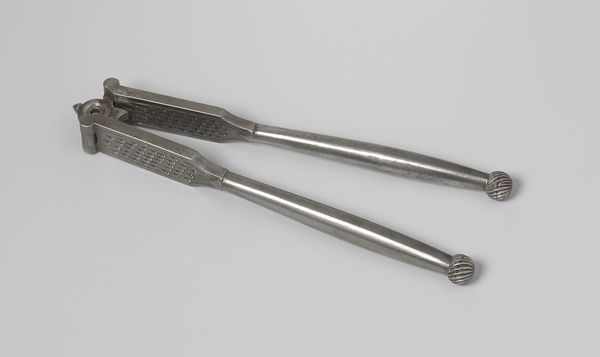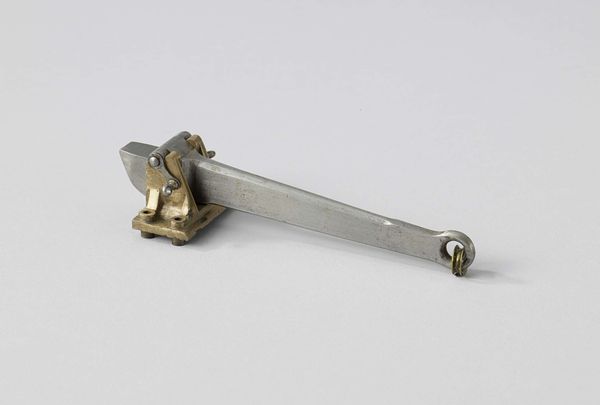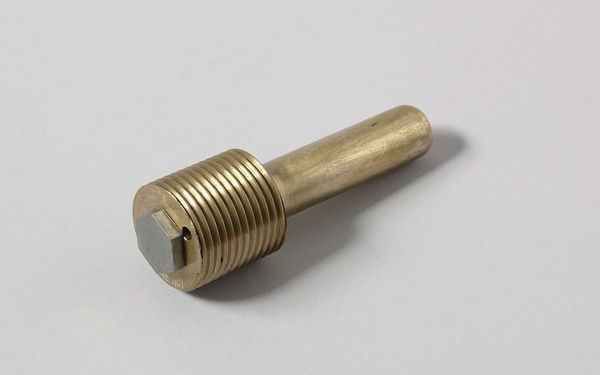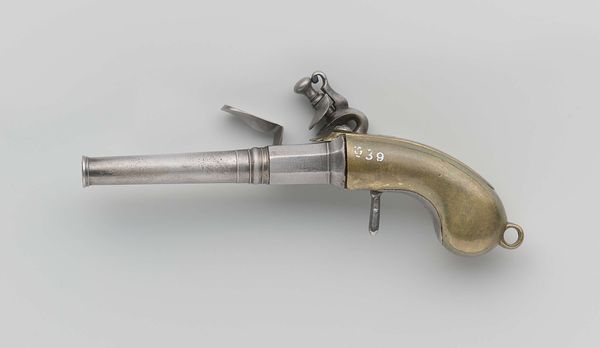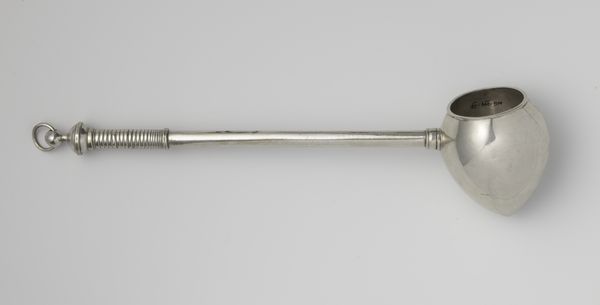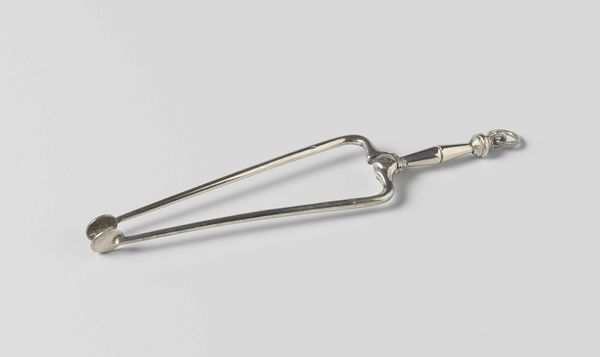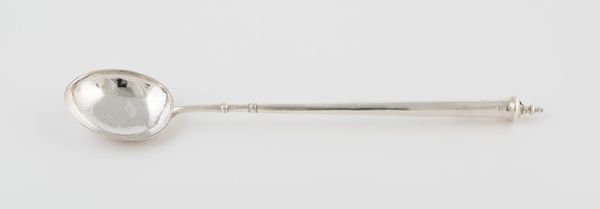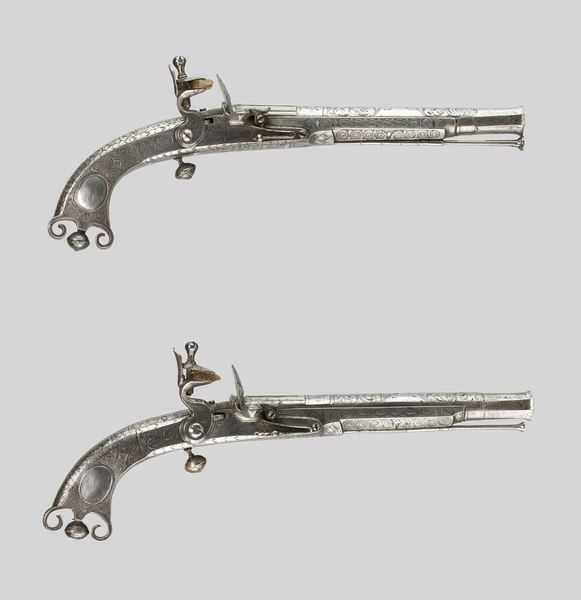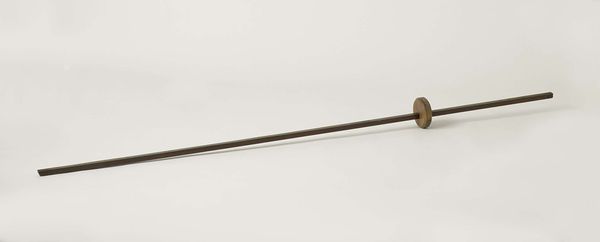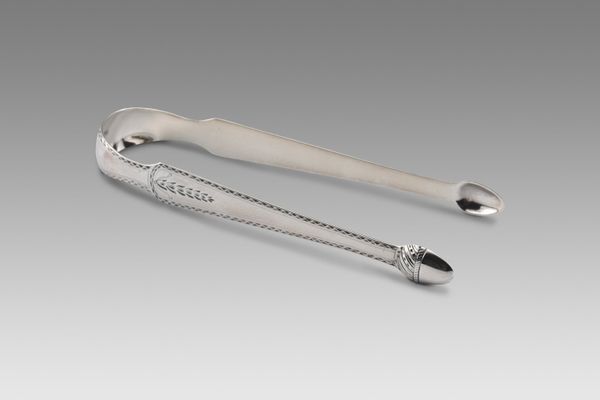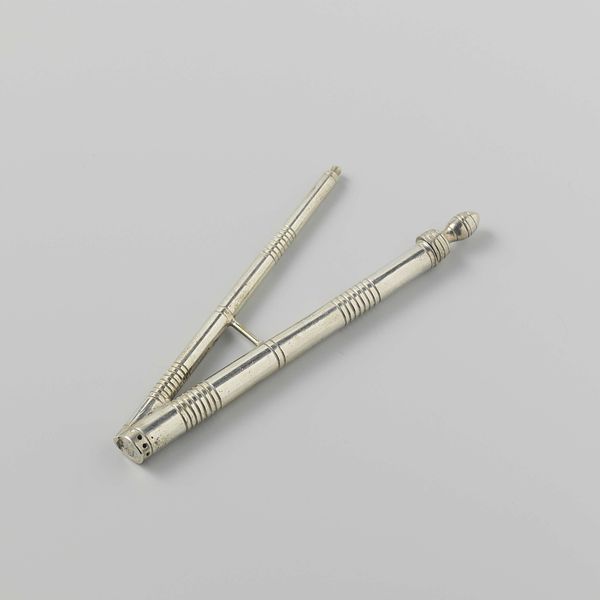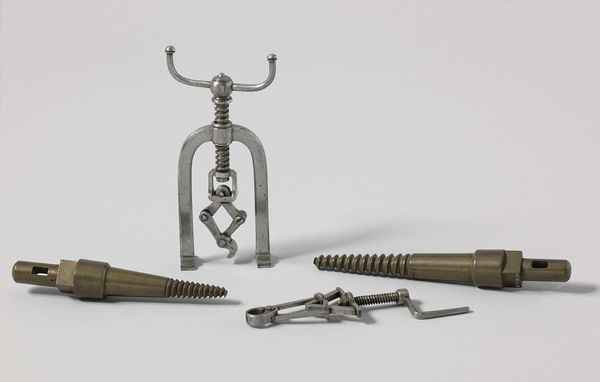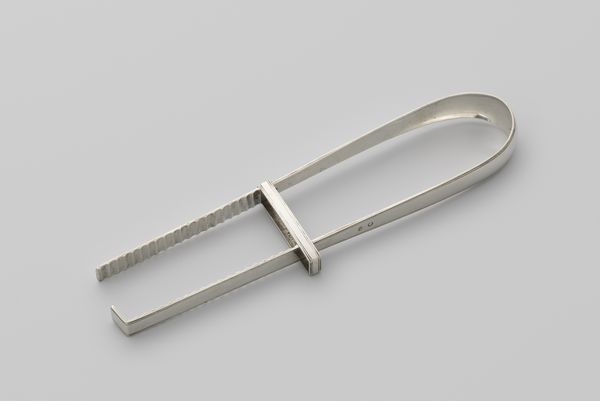
metal
#
metal
Dimensions: height 63 cm, width 41 cm, depth 8.3 cm
Copyright: Rijks Museum: Open Domain
Editor: Here we have the "Rigger's Screw," a metal tool created in 1851 by Rijkswerf Hellevoetsluis. It looks so robust, yet strangely delicate, like a piece from a mechanical insect. How do you interpret this work within its historical context? Curator: Seeing this tool, I'm immediately struck by its connection to the rise of industrial capitalism and the societal hierarchies inherent in maritime power during the 19th century. The “rigger” in "Rigger's Screw" reminds us of the labor required to build and maintain these ships and empires. Editor: That’s interesting. It makes me think about the specific individuals who would have used this tool and their own lived experiences. Curator: Precisely. We have to ask, who were the riggers? Often, these were working-class men whose physical strength and skill were exploited in the name of naval and commercial dominance. Consider the conditions they toiled under. Were they fairly compensated? What was the impact of their work on their bodies and their communities? Editor: So the tool, seemingly neutral, becomes a symbol of a complex web of social and economic forces. It almost feels violent when you start to imagine it as a tool of labor exploitation. Curator: It highlights a historical process of extraction—both of raw materials and of human effort. It raises questions about power, control, and the human cost of progress. Even its metallic sheen speaks to a relentless drive toward efficiency and the displacement of human skill. Editor: This really changes how I see the piece. What I first perceived as an impressive metal tool can symbolize historical inequalities and exploitation. Curator: By considering this “Rigger’s Screw” through an intersectional lens, we can use it to critically reflect on systems of power that are still prevalent today. Editor: Absolutely. I am taking away the realization that we can analyze this artwork in relation to power structures that may often go unnoticed.
Comments
No comments
Be the first to comment and join the conversation on the ultimate creative platform.
